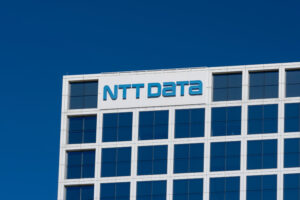As social media evolves, Bluesky’s new proposal may reshape how your data is used. In an era of rising AI and privacy concerns, Bluesky aims to give you control. By introducing user-controlled data permissions, the platform tackles issues like generative AI, protocol bridging, and web archiving. This change could greatly affect your online experience and the digital ecosystem. As we explore the proposal, consider its impact on your digital footprint and the future of social networking.
Bluesky’s Proposal for User-Controlled Data Permissions

Bluesky’s innovative proposal aims to empower users with granular control over their data usage. This groundbreaking approach addresses growing concerns about data privacy and AI training practices in the digital age.
Four Key Permission Categories
The proposed system allows users to specify their preferences across four crucial areas:
Generative AI: Users can decide whether their data can be used to train AI models.
Protocol bridging: Control over data sharing between different social media platforms.
Bulk datasets: Permission for inclusion in large-scale data collections.
Web archiving: Consent for preserving content in public web archives.
Implementation and Challenges
Bluesky’s proposal draws inspiration from the ‘robots.txt’ file used by websites to communicate with web crawlers. However, implementing this system faces several hurdles:
Enforceability: The effectiveness of these permission signals relies on external entities voluntarily respecting user preferences.
Technical complexities: Implementing a user-friendly interface for managing these permissions while ensuring seamless integration with the platform’s architecture.
Balancing interests: Striking a delicate balance between user privacy, data accessibility for innovation, and the platform’s growth needs.
Despite these challenges, Bluesky’s initiative represents a significant step toward user-centric data governance in the evolving landscape of social media and AI technologies.
Understanding the Four Data Usage Categories
Bluesky’s proposal introduces four distinct categories of data usage, each addressing specific concerns in the digital landscape. By offering users control over these categories, the platform aims to enhance transparency and user autonomy.
Generative AI
This category focuses on the use of user-generated content for training AI models. Users can choose whether their posts, images, or other data can be utilized to improve machine learning algorithms. These address growing concerns about AI systems potentially misusing personal information or creative content without consent.
Protocol Bridging
Protocol bridging enables interoperability between social networks. Users control data sharing across platforms. This expands their reach while protecting their digital footprint.
Bulk Datasets
This category pertains to the compilation and distribution of large-scale user data. By giving users the power to opt in or out, Bluesky aims to balance research needs with individual privacy concerns.
Web Archiving
Web archiving involves the preservation of online content for historical purposes. Users can determine if their posts should be included in long-term digital archives, weighing the benefits of historical preservation against personal privacy preferences.
By offering granular control over these categories, Bluesky empowers users to make informed decisions about their data usage in an increasingly complex digital ecosystem.
The Debate Around Bluesky’s Stance on User Data
Bluesky’s recent proposal to implement user-controlled data permissions has sparked a heated debate within the tech community. While some applaud the move as a step towards greater user autonomy, others view it with skepticism.
Proponents of User Control
Supporters argue that this initiative aligns with Bluesky’s commitment to decentralization and user empowerment. By allowing individuals to specify how their data can be used, the platform is setting a new standard for privacy in the social media landscape. This approach could potentially address growing concerns about AI companies scraping user data without consent.
Skeptics’ Concerns
Critics, however, question the enforceability of these permissions. Without a robust mechanism to ensure compliance, they argue that the proposal may amount to little more than a gesture. Some users worry that this move could be a precursor to Bluesky monetizing user data, despite the company’s assurances to the contrary.
Implications for the Future
The debate surrounding Bluesky’s proposal highlights the complex challenges facing social media platforms in the age of AI. As the line between public and private data becomes increasingly blurred, the industry must grapple with balancing innovation and user privacy. Bluesky’s approach, whether successful or not, may serve as a valuable case study for future attempts to navigate this thorny issue.
Enforceability Concerns and the Reliance on External Entities
The Challenge of Voluntary Compliance
While Bluesky’s proposal for user-controlled data permissions is a step towards empowering users, it faces significant hurdles in terms of enforceability. The effectiveness of these consent signals hinges entirely on the willingness of external entities to honor user preferences voluntarily. This reliance on good faith compliance raises questions about the practical impact of such a system in a digital landscape where data is often viewed as a valuable commodity.
Potential Loopholes and Exploitation
Critics argue that without robust enforcement mechanisms, the proposed system could be easily circumvented or ignored by determined data scrapers and AI companies. The absence of legal or technical safeguards may create a false sense of security for users while their data remains vulnerable to unauthorized collection and use. This scenario underscores the need for a more comprehensive approach that combines user-defined permissions with stronger protective measures.
Balancing User Control and Practical Implementation
Despite these challenges, Bluesky’s initiative represents an important starting point in the ongoing dialogue about data rights and AI ethics. By providing users with explicit options for controlling their data, the platform is setting a precedent that could influence industry standards and potentially lead to more enforceable solutions in the future. The key lies in striking a balance between user empowerment and practical implementation in a rapidly evolving technological landscape.
The Implications of User-Controlled Data Permissions in the AI Era
Empowering Users in the Digital Landscape
Bluesky’s proposal to implement user-controlled data permissions marks a significant shift in the social media landscape. By giving users explicit control over how their data is used, particularly for AI training and public archiving, the platform is addressing growing concerns about data privacy and consent. This move could set a new standard for user empowerment in the digital age, potentially influencing other social networks to follow suit.
Challenges in Enforcement and Adoption
While the concept of user-controlled permissions is promising, its effectiveness largely depends on external entities respecting these preferences. The voluntary nature of compliance poses a significant challenge, as there’s no guarantee that all data scrapers or AI companies will honor these signals. Additionally, the implementation of such a system may require substantial changes to existing data collection and processing practices across the tech industry.
Balancing Innovation and Privacy
The proposal raises important questions about the balance between technological innovation and individual privacy rights. On one hand, unrestricted access to data has been crucial for advancements in AI and machine learning. However, growing public awareness of data misuse has led to calls for stricter controls. Bluesky’s approach attempts to strike a middle ground, potentially allowing for continued innovation while respecting user preferences. This could pave the way for a more ethical and transparent AI development process in the future.
Core Insights
As you consider the implications of Bluesky’s proposal, it’s important to recognize the evolving landscape of data privacy and AI ethics. This initiative represents a significant step towards empowering users with greater control over their digital footprint. While challenges remain in enforcement and widespread adoption, the concept of user-controlled data permissions sets a precedent for other platforms to follow. As the digital ecosystem continues to evolve, your awareness and engagement with such proposals will be crucial in shaping the future of online interactions and data usage. Stay informed and proactive in managing your digital presence as these developments unfold in the coming months and years.
More Stories
Snapchat’s Sponsored AI Lenses Redefine Brand Engagement
The platform’s Sponsored AI Lenses are redefining brand engagement, offering you unprecedented opportunities to connect with your audience.
Alibaba Accelerates AI Integration in Automotive Industry with Nio and BMW Partnerships
As you navigate the rapidly evolving landscape of automotive technology, you’ll find Alibaba Group at the forefront of artificial intelligence integration.
SmartThings 2025: Samsung Elevates Home Automation with AI, Health Sync, and Matter 1.4
Samsung’s 2025 SmartThings update stands out as a major innovation. This comprehensive update boosts home automation by integrating artificial intelligence, health syncing, and the advanced Matter 1.4 standard.
Google’s Gemini Reorients: Leadership Shift Signals New AI Strategy
As you navigate the evolving landscape of artificial intelligence, Google’s recent leadership change in its Gemini AI division signals a...
Kubernetes Meets AI: Google, ByteDance, and Red Hat Redefine Model Inference at Scale
As you navigate the rapidly evolving landscape of artificial intelligence and cloud computing, a groundbreaking collaboration between tech giants Google,...
Japan’s Bold Bet: Rapidus Secures $5.4 Billion to Reclaim Semiconductor Supremacy
Rapidus Corp., a state-backed startup, leads this effort. It has embarked on an ambitious journey to revolutionize the chip industry. Test production is already underway, and partnerships with tech giants are on the horizon.


